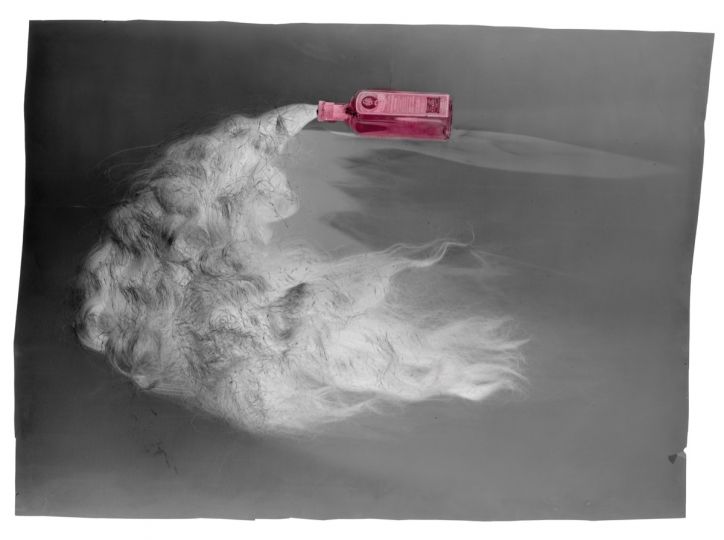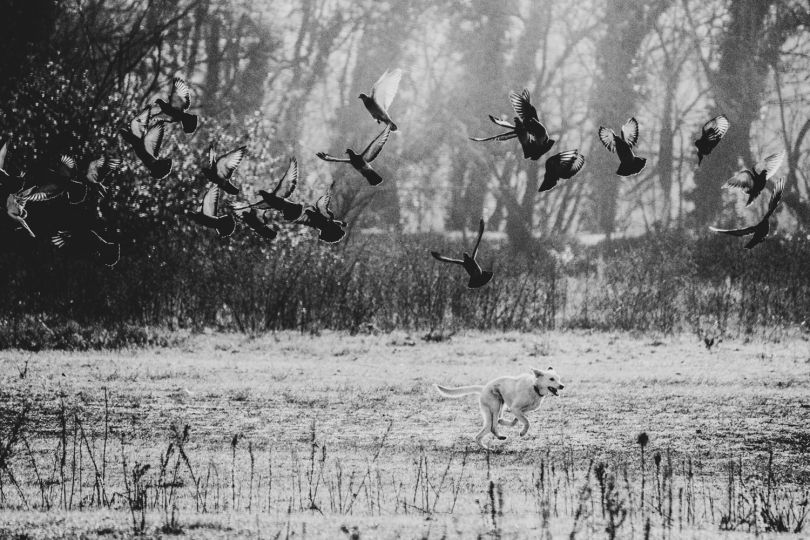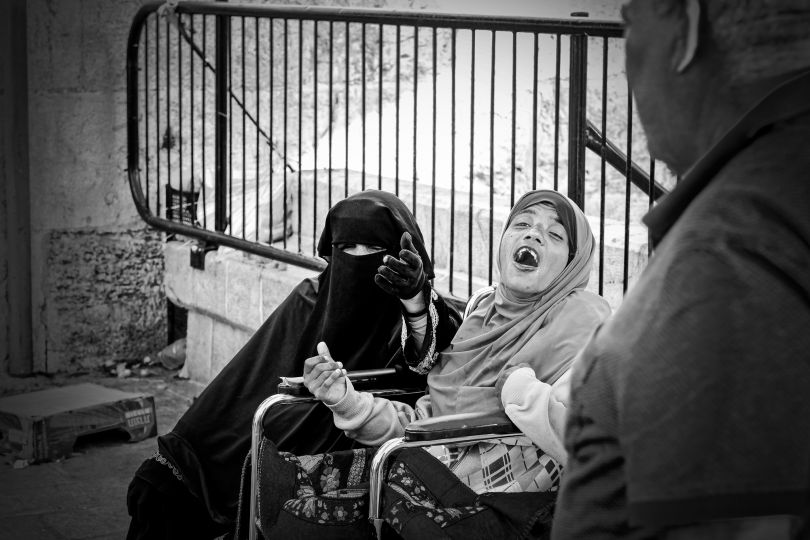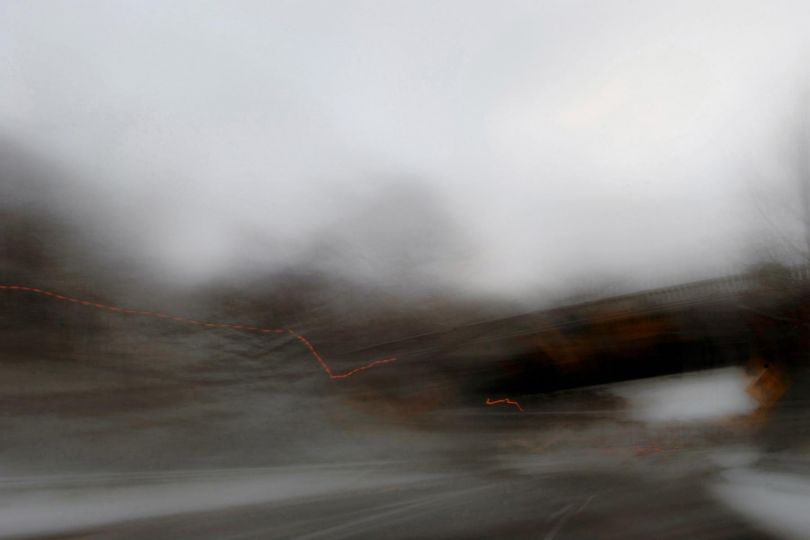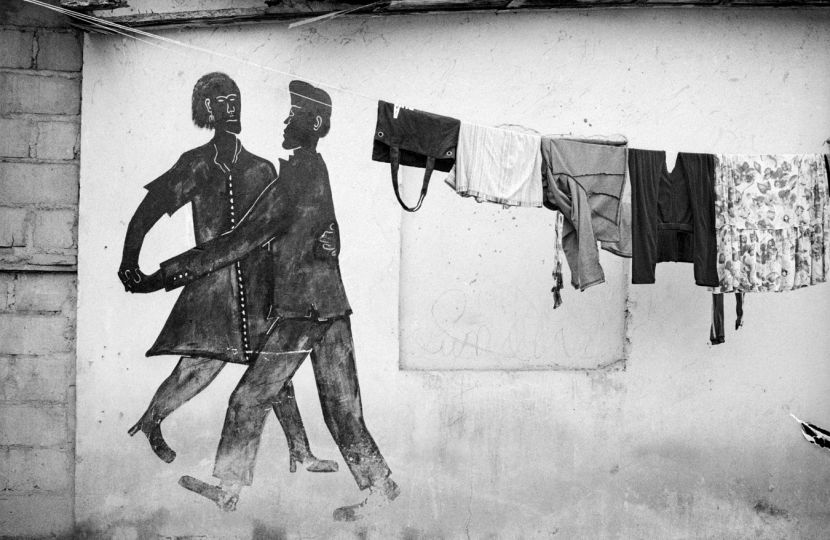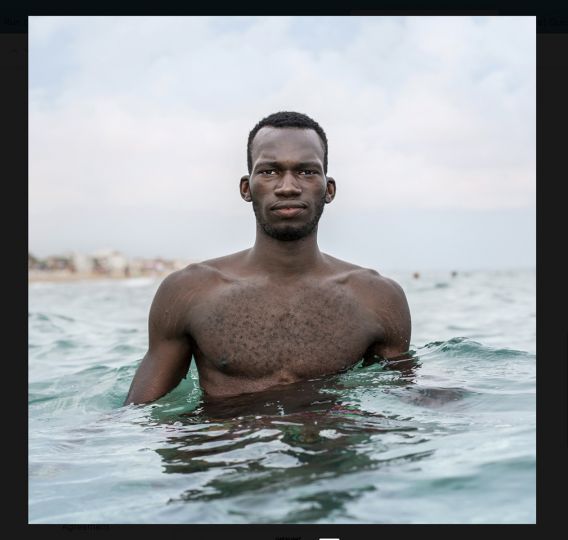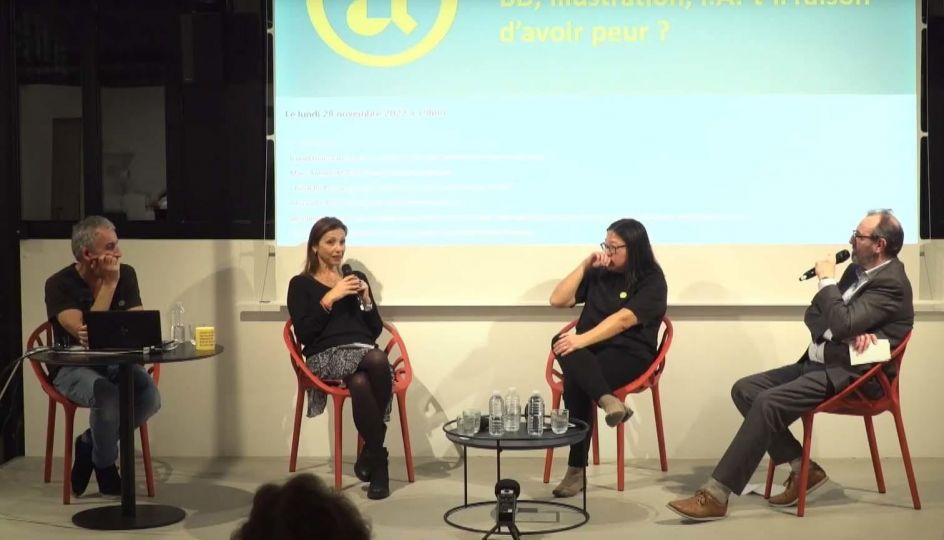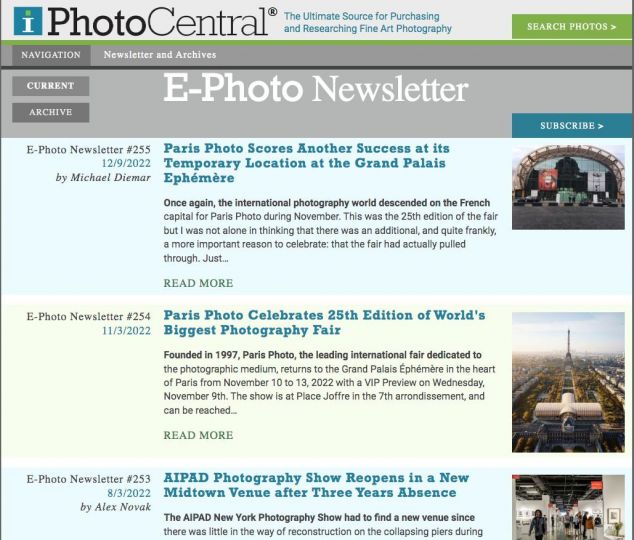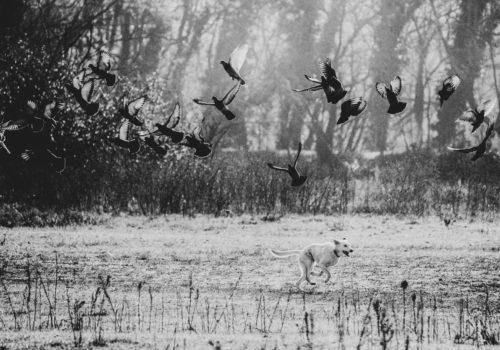Rizzoli is releasing this month a sublime book entitled Dora Maar: Paris at the time of Man Ray, Cocteau and Picasso. Its author is Louise Baring, who writes here on the life of Dora Maar, who was the lover and muse of Picasso, and a magnificent photographer, intimately linked to the surrealist current.
One late October evening in 1998, art enthusiasts streamed into the eighteenth-century Maison de la Chimie on Paris’s Left Bank. They came for the first of six auctions of Picasso memorabilia, books, and photographs owned by Dora Maar, or Madame Henriette Markovitch, a former photographer whose love affair with the great Spanish modernist spanned the tumultuous years between the Spanish Civil War and the end of the Second World War. A proud, enigmatic recluse, Maar treasured her hoard in silence for over half a century in her second-floor apartment on a narrow street near the Seine until her death in July 1997, four months before her ninetieth birthday.
The audience watched, like theatregoers at a first night, as the French auctioneer sold off unseen portraits of the woman Picasso immortalised: a dignified early portrait of Maar with an impenetrable gaze, her sharp green-nailed fingers placed against her soft cheek; a cartoon-like “Weeping Woman” with beaded black slashes for the tears running down her cheeks; intimate, Ingres-style pencil sketches revealing his lover’s grave, wistful face, chiseled forehead, and straight nose; Dora asleep, her arms flung behind her head, a seraphic smile on her lips. In a crayon and ink drawing, Picasso portrays himself as an all-powerful minotaur ravishing a naked, acquiescent Dora, a symbol of their relationship—a struggle that she ultimately lost.
Like Miss Havisham in Charles Dickens’s Great Expectations, Dora Maar clung to the past, leaving untouched her mirrored, high-ceilinged apartment on the rue de Savoie, in the 6th arrondissement, after Picasso abandoned her for the cool-headed, far younger Françoise Gilot in 1945. “Her apartment was full of ghosts; Dora never threw away anything connected with Picasso,” recalled the late Myrtille Hugnet, the widow of Maar’s friend Georges Hugnet, a Surrealist poet and graphic artist who remained a close friend until his death in 1974. “The walls and ceilings were full of cracks and holes. Dora never repainted where Picasso had drawn trompe l’oeil spiders, flies, and mosquitoes.”1
Glass-fronted mahogany bookcases stuffed with books, Picasso drawings, letters, playful paper cutouts, miniature sculptures, and tiny framed portraits as well as jewelry he created for her became her “private museum.” A yellowing envelope containing a bouquet of withered violets and the artist’s scribble: “To Dora, 1st May, 1937,” added to her collection. Maar also religiously preserved cliché-verre portraits, the fruit of the couple’s joint experiments in the darkroom, published in the journal Cahiers d’Art in 1937 with a preface by Man Ray. “Be patient! What’s the point of trying to buy those glass-plate negatives? You’ll have everything once I’m gone,” she told the Musée Picasso in Paris on the telephone shortly before she died.2
Only a Rolleiflex camera in its brown leather case on a chest of drawers hinted at an earlier incarnation. On shelves and under Maar’s bed lay piles of old six-inch-by-six-inch photographs covered with dust, taken between 1932 and 1936: a boy in Barcelona walking on his hands, spindly legs in air, his espadrilles laced around his ankles; a surrealistic fashion image with a giant silvery star replacing the head of a graceful model in a lamé evening gown; a suited man on his knees thrusting his head into a manhole in a London pavement; an image entitled Le Simulateur, a cryptic, dreamlike photomontage of an inverted seventeenth-century vault, with a boy slipping down the side, his arched back echoing the vault’s curve.
These photographs were among several hundred Dora Maar prints quietly sold at auction in Paris in November 1998, a month after the swirl of publicity surrounding the Picasso sale. “I was once a famous photographer,” she told her concierge, Rose Toro Garcia. Yet apart from ninety-odd images she sold in 1990 to Man Ray’s friend Marcel Fleiss, a Surrealist art dealer in Paris (a series that formed the backbone of a Spanish retrospective in Valencia in 1995), Dora Maar’s photographs had faded from view since her mid-1930s heyday. Few prints were in existence, either in museums or private collections when she died, though in 2004 the Centre Pompidou acquired a substantial part of the photographic collection including 1,851 negatives and 270 contact prints. Overshadowed by her mythic lover, Maar’s professional reputation at the end of her life rested mainly on her stage-by-stage photographic record of Picasso’s Spanish Civil War masterpiece, Guernica.
“I hope Dora would forgive me for saying that she is inconceivable without Picasso,”3 said Picasso’s friend the late Heinz Berggruen, a German-born dealer and collector, who bought Dora Maar with Green Fingernails for the eponymous collection he bequeathed to Berlin—one of countless Dora Maar portraits that grace museum walls across the world. Though proud of her place in art history, Maar also craved recognition as an artist. “To complicate matters, Dora wanted to be known as a painter, not a photographer,” explains Marcel Fleiss.4 Decades earlier, Picasso, who, according to Brassaï, dubbed photography “un art mineur,”5 pushed his mistress to put down her camera. Yet it is Dora Maar’s photographs, not her paintings, that reveal her as a creative power in her own right.
A vividly subversive figure in 1930s Paris with her startling Elsa Schiaparelli hats, Maar’s quirky sensibility dovetailed with the Surrealist ethos. Her photomontages embody what the Surrealist leader André Breton described as the “dizzying descent into ourselves…the perceptual excursion into the midst of forbidden territory”. Père Ubu (Portrait of Ubu) , an unsettling photomontage of an armadillo fetes that seems to emerge from the unconscious rather than the real world, became a Surrealist icon. It hung at the entrance to tribal art dealer Charles Ratton’s celebrated Surrealist exhibition in May 1936 that juxtaposed works like Man Ray’s blanket-wrapped sewing machine with masks from Alaska and New Guinea. A month later Père Ubu (Portrait of Ubu) appeared alongside works by Salvador Dali, Max Ernst and René Magritte at the International Surrealist Exhibition at the at the New Burlington Galleries in London.
Maar enjoyed close links with the Surrealists, who admired her intellectual astringency as well as her gifts as a photographer: “From Prague, the Surrealists send you their respect, admiration and affection—it’s a great success here,” wrote the all-powerful Breton and the poet Paul Éluard from a Surrealist show in the Czech capital. Maar’s copy of Breton’s second Surrealist manifesto bears the dedication “A TOI dans l’Amour où il n’a plus ni nuit ni jour. André” (TO YOU with love that knows nor night nor day). He included Maar as one of the Surrealist muses acclaimed beneath the lettering of his Surrealist gallery Gradiva (D for Dora) on the rue de Seine in 1937. Designed by Marcel Duchamp, who gave its entrance the form of a double-cast shadow, Gradiva was, Breton explained, the eponymous heroine of a “Pompeiian” novel by the German writer Wilhelm Jensen who attracted Sigmund Freud’s attention.
A freethinker with libertarian, leftist tendencies, Maar shared the Surrealists’ views on politics as well as art: “I was very left-wing at twenty-five . . . though I was never a member of the Communist Party,” she explained in a telephone interview with Victoria Combalía, a Spanish curator, published in ArtPress, a French art magazine in 1995.7 She joined Surrealist political meetings at the Café de la Place Blanche in Pigalle, adding her signature to manifestos like Appel à la Lutte (Call to the struggle) in February 1935 as well as that of the Contre-Attaque (Counter-Attack)—protesting the rise of fascism before the Second World War. Breton co-founded the Contre-Attaque group in 1935 with his intellectual rival, the philosopher and essayist Georges Bataille. Notorious for his erotic masterpiece, L’Histoire de l’Oeil (Story of the Eye), Battaille was a self-professed disciple of the Marquis de Sade. He was also, for a few months in late 1933 and early 1934, Maar’s lover, thus preparing her for Picasso, who, claims his biographer, John Richardson, expected his women to have read de Sade’s works.
Working as a professional photographer from 1931, Maar developed unusually wide influences and interests, guided by an original yet disciplined aesthetic. She first collaborated with Pierre Kéfer, a young designer whose well-heeled parents paid for a lavishly equipped photographic studio in the garden of their house in Neuilly: “[Kéfer] had the intelligence to realise there was no one better than Dora Maar to use the lights, screens and marvellous gadgets with which he has enriched his palace,” wrote Jacques Guenne, an art critic writing in L’Art Vivant in 1934. “In the middle of the studio a large pool, that can be filled with water or sand which allows Dora Markovitch or M. Kéfer to conjure up the most varied decor: the sea, desert, a lake of women and, why not, of men too.”8
Maar balanced commercial commissions, including fashion and advertising, with portraits, street photography, and creative work in her spare time. The burgeoning market in weekly and monthly illustrated magazines in 1930s Paris aided her professional career. “In homage to Dora Maar, who holds every image in her hands,” wrote Paul Éluard in a dedication to the versatile young photographer in his collection of poems, La Rose Publique, in 1934. Maar’s images sometimes evoke the work of other photographers, including Man Ray, Raoul Ubac, Henri Cartier-Bresson, or the painter Giorgio de Chirico. Yet her idiosyncratic vision, combined with cropping, close-ups, angled shots, and plunging perspectives, as well as the occasional burning and scratching of her negatives, lent her creative work its distinctive essence. “[She was] a remarkable photographer,” said Cartier-Bresson in 1994, adding that her work always had something “striking and mysterious.”9
It was through advertising that Maar first experimented with surrealistic photomontage. In one advertisement for Pétrole Hahn hair oil, ripples of wavy blonde hair pour out from the bottle turned on its side; in another a miniature ship sails along the waves of hair as though on a storm-tossed sea. The first image was reproduced in Charles Peignot’s celebrated Arts et Métiers Graphiques, a graphic arts magazine that also published Publicité and Photographie, annual surveys on advertising and photography. Maar’s images appeared in the latter alongside masters like André Kertész, Lázló Moholy-Nagy, Albert Renger-Patsch, and Germaine Krull just as the center of European avant-garde photography shifted from Berlin to Paris in the early 1930s.
Harry Meerson, a Polish-born fashion photographer, assisted Maar’s early career as did Emmanuel Sougez: “I’m grateful above all to Sougez . . . [he] was a key influence, an excellent photographer,”10 Dora Maar said in 1995. A champion of the Neue Sachlichkeit (New Objectivity), the unembellished style that sprang up in 1920s Germany that was exemplified in the Film und Foto exhibition in Stuttgart in 1929, Sougez founded the photographic department at the French weekly journal L’Illustration in 1927. Maar’s simple yet sensuous nudes, emphasising curves of form with light and shade, reveal her mentor’s impact, turning away from soft-lensed, painterly traditions that prevailed in French photography. Her formal yet sensitive study of arum lilies echoes work by Imogen Cunningham, the Californian modernist. In a series of advertisements for bathing suits, Maar superimposes a model on water, as though floating gracefully, the water’s surface breaking up with ripples and reflections—one of the aesthetic themes of the modernist movement.
Like Lee Miller in the late 1920s, Maar asked Man Ray if she might work as his photographic assistant. Unlike with Miller, May Ray refused her but offered advice should she need it. “I later knew him better in Surrealist circles,” she said.11 Indeed, a Man Ray snapshot from 1935 shows Maar on a weekend in Saint-Jean-aux-Bois north of Paris, with André Breton, Maar’s friend Jacqueline Lamba (Breton’s wife), and Paul and Nusch Éluard. Maar captured her friend Nusch, a fragile beauty with a flower-stem neck, in a haunting series of portraits, culminating in Les Années vous Guettent (The Years Catch Up with You) in which she overlaid Nusch’s features with a spider’s web. In Man Ray’s snapshot, the gregarious Nusch joins the others in a game of cards, while the serious, self-contained Dora sits at table reading a book.
Describing Dora in his autobiography, Self-Portrait, as “a beautiful girl and an accomplished photographer,”12 Man Ray also photographed Maar the following year in one of his classic images: a solarised portrait in which he reversed the tones, framing his subject with a pale glow in contrast with the dark shadows etched around her oval face. Not long after, Picasso spotted the portrait at his friend Man Ray’s studio. Transfixed, he begged to have the print in exchange for one of his etchings. “[Picasso’s] relationship with Dora was, above all, based on that photograph . . . she was, for him, first of all, a photographer and a photograph,” writes the Picasso scholar and curator Anne Baldassari.13
“All [Picasso’s] portraits of me are lies. They’re all Picassos. Not one is Dora Maar,”14 she told the American writer James Lord, weary of the inescapable image her lover created for her as the tragic Weeping Woman, the most elaborate of which now hangs at Tate Modern in London. Yet those who loved and understood Maar saw her in different light: stubborn, sensitive, humorous, passionate in love as well as politics and culture. Her vast library of books—whether studies on mysticism, religion, philosophy, the ancient world or on El Greco, Goya, Tintoretto, and Michelangelo—was found in her apartment stacked in piles on the floor, in cupboards, or on shelves supported by white Doric columns.
Brassaï, with whom Maar shared a darkroom in Montparnasse in the mid-1930s, observed in his memoir, Picasso & Co, the “grave, tense countenance of this girl with the light eyes, and that look that was so fixed and attentive, it was sometimes unsettling,” while Jean Cocteau commented on her “mouth like a torn flower.” In her shadowy, yet perceptive portrait from 1937 by Rogi André, a Hungarian-born photographer and ex-wife of André Kertesz, reveals Maar’s calm, serious beauty that was later described by both Françoise Gilot and the late art critic Pierre Cabanne. “The most remarkable thing about her was her extraordinary immobility. . . . I noticed her intense bronze-green eyes, and her slender hands with their long, tapering fingers,” Gilot famously wrote in her autobiography Life with Picasso in 1964.15 Though much in demand, Cabanne added, she also had a distant air that put off most would-be suiters.
Maar was a stills photographer on the set of Jean Renoir’s film Le Crime de Monsieur Lange when Paul Éluard introduced the twenty-eight-year-old to his friend Picasso at a press screening in early January 1936. Picasso later spotted Maar at a neighbouring table at a favourite café, Les Deux Magots, on the Boulevard Saint-Germain. In a bizarrely surrealistic tale, endlessly repeated, Dora removed her black gloves embroidered with pink flowers, then stabbed between her fingers with a long sharp knife until she drew blood. Fascinated, Picasso, asked her for the gloves which he then placed in a glass cabinet with other souvenirs.
Françoise Gilot tells us that Maar soon invited Picasso to pose for her. Though a busy man, he accepted. The sitting took place at Maar’s studio at 29, rue d’Astorg, which lent its name to one of her best-known photomontages from 1935: a seated female figurine with a pin-like head and a distorted, arched gallery shooting off into the distance. Her twenty-five odd Picasso portraits, developed only into negatives, proved respectful rather than penetrating. But in one of the series, Maar scraped directly onto the negative, creating a dark, forbidding halo around the artist’s face.
Separated from his Russian wife, Olga Khokhlova, a former ballerina with Serge Diaghilev’s Ballets Russes, Picasso had just fathered a child with his mistress, Marie-Thérèse Walter: “Dora slipped in, as through a narrow chink,” wrote Pierre Cabanne.16 In her 2005 Musée Picasso exhibition catalogue, the Picasso scholar Anne Baldassari suggests that Maar’s knife game, fraught with danger, signaled her advance acceptance of the rules of a battle that would end in personal tragedy. Whatever the case, Maar’s surrender to the all-powerful creative genius extinguished her career. After Guernica, Maar’s final published photograph was a colour portrait of Picasso for the cover of Time magazine in 1939.
“[Picasso] pushed her to paint because he couldn’t tolerate the idea that she might be better than him in any sphere. Yet he fell he love with a talented photographer,” Anne Baldassari argues.17 Whatever the case, Maar closed her rue d’Astorg photographic studio, converting her tall-windowed sitting room overlooking the courtyard at the rue de Savoie into her new workplace. A series of portraits from November 1944 by the English photographer Cecil Beaton shows Maar at home with her friend Marie-Laure de Noailles, a rich arts patron and salon hostess. Canvases lie propped up on easels and a chair; in another Maar stands in profile before a self-portrait—a pastiche of a Picasso—resting on the marble mantelpiece next to a miniature carved double-spiral staircase and a convex mirror.
“Yes, I believe it . . . my fate is a magnificent one, however, it seems,” she wrote on a scrap of paper in 1946, now in the Picasso archives, a year after he ended their tangled nine-year relationship. Almost destroyed by the breakup, Maar slowly recovered her impervious serenity but never her creative independence. The English art critic John Russell, who befriended Maar in the 1950s, described her as a woman of great distinction and resolutely private: “[Her paintings] represent, beyond question a solitary’s view of the world,” he wrote in the foreword to Maar’s 1958 show at the Leicester Galleries in London. Maar did not go to the opening. Once a woman of the world, she slowly turned her back on it, resolute in her refusal to exploit her status as Picasso’s erstwhile companion and muse.
A couple of decades later, in 1977, Lothar Schirmer, an art and photography book publisher from Munich with an original eye, spotted powerful Dora Maar images in Arts et Métiers Graphiques’ 1930s annual issues on photography and advertising. Impressed, he wrote to Maar asking if he might publish a volume of her photographs, but received a sharp rebuff.18 The late Sam Wagstaff, a legendary American photography collector, also asked permission to reproduce one of her Surrealist images in a book on his collection. His request in turn went unanswered. “She disowned that part of her career; one had to be very furtive in approaching her,”19 observed the late Christian Bouqueret, a French photography historian and collector. “She’s inaccessible and doesn’t wish to see anyone,” wrote Victoria Combalía, after her telephone interview with Maar in 1993, noting the still beautiful voice that once prompted Marc Chagall to call Maar “my little nightingale.”
Maar photographed at a time when the art world spurned the medium, convinced that something endlessly reproducible was not worth collecting. But by the late 1980s, a reexamination of the Surrealists led by museums prompted fresh interest in her work. In 2002, five years after her death, an exhibition entitled Dora Maar, Bataille, Picasso et les Surréalistes in Barcelona and Marseille introduced her photographs to a wider public. An important, large-scale show, entitled Picasso-Dora Maar at the Musée Picasso in 2005, full of religiously preserved Picasso treasures from her apartment, followed by a retrospective at the Palazzo Fortuny in Venice in 2014, also revealed the full extent of her artistry: her daring darkroom experiments (an inspiration to Picasso in his cliché-verre portraits); photographs of her lover enacting mythic figures during their summer sojourns in the South of France; her advertising images, and, above all, the cryptic dreamworld she created in her personal work, now acknowledged as masterpieces of the Surrealist avant-garde.
Louise Baring
Louise Baring is an author specializing in photography. She lives and works in London, UK.
Dora Maar: Paris in the Time of Man Ray, Jean Cocteau, and Picasso
Louise Baring
Published by Rizzoli
$55
http://www.rizzoliusa.com/

